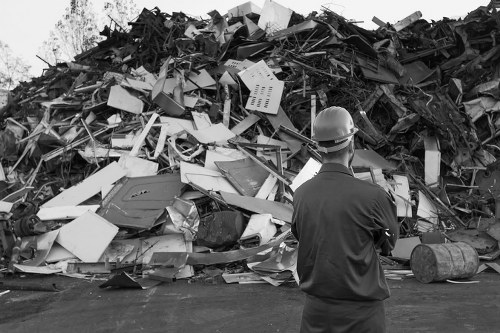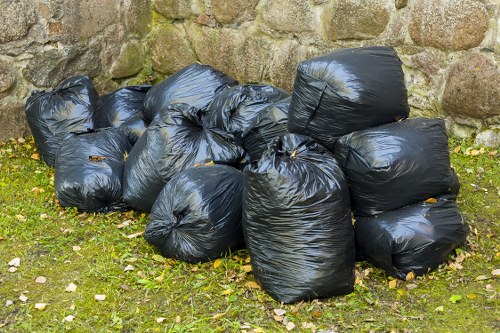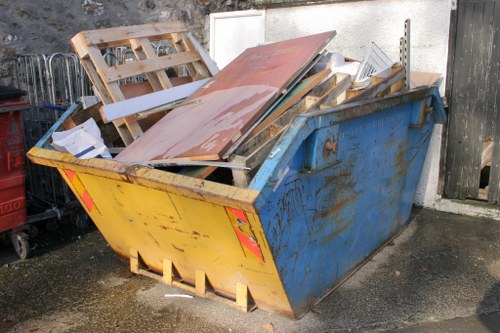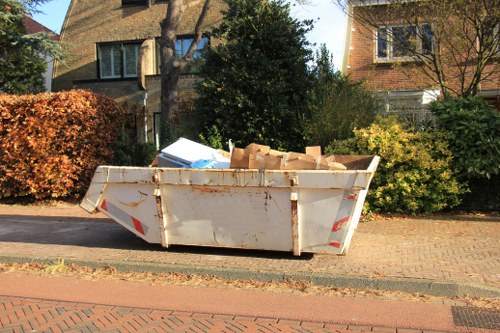Comprehensive Guide to Construction Waste Clearance in New Cross

Construction projects, whether large or small, inevitably generate a significant amount of waste. Efficiently managing and clearing this waste is crucial not only for maintaining a clean and safe work environment but also for adhering to environmental regulations. In the vibrant locale of New Cross, finding reliable construction waste clearance services is essential for contractors, builders, and homeowners alike.
New Cross, known for its bustling construction activities, demands effective waste management solutions. Proper clearance ensures that construction sites remain organized, reducing hazards and promoting a smoother workflow. Moreover, responsible waste disposal contributes to environmental sustainability, a growing concern in today’s construction industry.
Understanding the processes involved in construction waste clearance can help stakeholders make informed decisions. From sorting and recycling to transportation and disposal, each step plays a vital role in the overall efficiency of waste management.
Why Construction Waste Clearance is Important

Effective construction waste clearance is not just about tidiness; it has broader implications for safety, cost, and environmental impact. Here are some key reasons why proper waste management is essential:
- Safety: Removing debris and hazardous materials minimizes the risk of accidents on construction sites.
- Environmental Protection: Proper disposal and recycling of waste prevent pollution and conserve natural resources.
- Cost Efficiency: Efficient waste clearance can reduce storage costs and prevent project delays caused by cluttered sites.
- Regulatory Compliance: Adhering to local waste management laws avoids legal penalties and promotes responsible building practices.
In New Cross, where construction activity is high, these factors become even more critical, underscoring the need for professional waste clearance services.
Types of Construction Waste

Construction sites produce various types of waste, each requiring specific handling and disposal methods. Understanding these categories can aid in selecting the right waste clearance service:
1. General Waste
Includes everyday refuse such as packaging materials, broken tools, and non-hazardous debris. This type of waste is typically disposed of in landfill sites.
2. Hazardous Waste
Comprises materials that are flammable, toxic, or otherwise dangerous, such as asbestos, paints, and solvents. Specialized disposal methods are required to handle this waste safely.
3. Recyclable Materials
Includes metals, wood, concrete, and plastics that can be processed and reused, reducing the environmental footprint of construction projects.
4. Electronic Waste
Disposals of outdated or broken electronic equipment like wiring, lighting fixtures, and machinery parts need careful handling to prevent environmental contamination.
Steps Involved in Construction Waste Clearance

Professional construction waste clearance involves a series of systematic steps to ensure efficient and responsible disposal:
- Assessment: Evaluating the type and volume of waste generated.
- Segregation: Sorting waste into categories for recycling, hazardous disposal, or landfill.
- Collection: Gathering the sorted waste from various points on the construction site.
- Transportation: Moving the collected waste to designated disposal or recycling facilities.
- Disposal: Properly disposing of non-recyclable and hazardous materials in compliance with regulations.
Each step requires careful planning and execution to maximize efficiency and minimize environmental impact.
Choosing the Right Waste Clearance Service in New Cross

Selecting a reliable construction waste clearance service in New Cross involves considering several factors:
- Experience and Expertise: Ensure the service provider has a proven track record in handling diverse types of construction waste.
- Compliance: Verify that the company adheres to local and national waste management regulations.
- Recycling Capabilities: Opt for services that prioritize recycling to support sustainability efforts.
- Cost-Effectiveness: Compare quotes and services to find a provider that offers value for money without compromising quality.
- Availability: Choose a service that can accommodate your project’s timeline and requirements.
In the competitive market of New Cross, these criteria help in selecting a service that aligns with your project’s needs and environmental values.
Benefits of Professional Waste Clearance Services

Engaging professional waste clearance services offers numerous advantages:
Efficiency and Speed
Experts manage waste swiftly, preventing accumulation and ensuring uninterrupted project progress.
Compliance Assurance
Professional services stay updated with regulations, ensuring all waste is handled legally and responsibly.
Environmental Responsibility
They emphasize recycling and proper disposal, contributing to sustainability goals and reducing the environmental impact.
Cost Savings
By optimizing waste management processes, professionals can help lower overall project costs related to waste handling and disposal.
Safety Enhancement
Proper waste clearance reduces on-site hazards, fostering a safer work environment for all personnel.
Contact us today to ensure your construction project in New Cross benefits from top-notch waste clearance solutions.
Innovative Practices in Construction Waste Management

The construction industry is continuously evolving, with new practices emerging to enhance waste management:
- Modular Construction: Reduces waste by standardizing building components.
- 3D Printing: Minimizes material usage and waste generation.
- Lean Construction: Focuses on efficiency and waste reduction throughout the project lifecycle.
- Advanced Recycling Technologies: Improves the processing and reuse of construction materials.
Adopting these innovative approaches can significantly improve waste clearance processes, making projects more sustainable and cost-effective.
Environmental Regulations and Compliance

Adhering to environmental regulations is paramount in construction waste management. Non-compliance can lead to hefty fines and project delays. Key regulations include:
- Waste Classification: Properly identifying and categorizing waste types.
- Permits and Licensing: Ensuring all necessary permits for waste transportation and disposal are obtained.
- Recycling Mandates: Complying with requirements to recycle certain materials.
- Reporting and Documentation: Maintaining accurate records of waste management activities.
Professional waste clearance services in New Cross are well-versed in these regulations, ensuring your project remains compliant and environmentally responsible.
Cost Factors in Construction Waste Clearance

Understanding the cost factors involved in construction waste clearance can help in budgeting and selecting the right service. Key factors include:
- Volume of Waste: Larger volumes require more resources and higher costs.
- Type of Waste: Hazardous and specialized waste disposal is often more expensive.
- Frequency of Clearance: Regular pickups may offer cost savings compared to one-time services.
- Transportation Distance: Longer distances to disposal sites can increase costs.
- Recycling Efforts: Services that emphasize recycling may have different pricing structures.
By clearly understanding these cost factors, you can make informed decisions that align with your project’s financial parameters.
Best Practices for Minimizing Construction Waste

Proactively minimizing construction waste can lead to significant savings and environmental benefits. Here are some best practices:
- Accurate Planning: Detailed project planning reduces errors and material wastage.
- Material Optimization: Use materials efficiently and explore alternatives that produce less waste.
- Recycling and Reuse: Implement on-site recycling programs and reuse materials whenever possible.
- Training and Awareness: Educate workers on waste reduction techniques and the importance of proper disposal.
- Regular Audits: Conduct waste audits to identify areas for improvement and track progress.
Implementing these practices not only enhances waste management but also contributes to the overall success and sustainability of construction projects in New Cross.
Book your service now to take advantage of expert waste clearance strategies that minimize waste and maximize efficiency.
Future Trends in Construction Waste Clearance

The future of construction waste clearance is leaning towards greater sustainability and technological integration. Emerging trends include:
- Smart Waste Management Systems: Utilizing IoT and AI to monitor and optimize waste collection and processing.
- Circular Economy Models: Promoting the continuous use of materials through recycling and reuse.
- Green Building Certifications: Increasing demand for certified sustainable construction practices that include effective waste management.
- Biodegradable Materials: Development and use of materials that break down naturally, reducing long-term waste issues.
- Collaborative Platforms: Enhancing coordination among stakeholders for more efficient waste clearance operations.
Staying abreast of these trends can help construction professionals in New Cross adopt innovative waste management solutions, ensuring projects are both efficient and environmentally friendly.
Conclusion

Construction waste clearance is a critical component of any building project, impacting safety, cost, and environmental sustainability. In New Cross, where construction activity is high, having a reliable and professional waste clearance service is indispensable.
By understanding the types of construction waste, the clearance process, and the benefits of professional services, stakeholders can make informed decisions that enhance project efficiency and support environmental goals. Embracing best practices and future trends in waste management further solidifies a commitment to sustainable construction.
Don’t let construction waste hinder your project’s success. Contact us today to ensure your construction site remains clean, safe, and compliant with all waste management regulations.